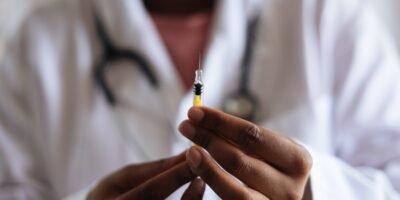Peru’s University of Engineering and Technology (UTEC) has found a way to eliminate the cost barrier associated with implementing many new technologies: they have designed the first billboard that turns atmospheric humidity into potable drinking water, producing about 100 litres/day. This past December, UTEC was experiencing a slump in enrollment for the upcoming semester and consulted the Peruvian ad agency Mayo Publicidad about how to spark interest in the institution. The result of the consultation was an ingenious way to combine advertising with engineering innovation.
The billboard was erected in the Bujama District of Lima, the second largest capital in the world set on a desert. Many residents of the Bujama District draw their water from a well whose water is polluted, but have no other alternatives since annual precipitation is just 0.51 inches (about 13 mm). Despite the lack of precipitation, atmospheric humidity averages 83% reaching nearly 100% in the mornings, but that water is suspended in the air as water vapour and, until recently, could not be harnessed by the city’s residents.
There are five electrically powered condensers inside the billboard which are cooler than the air outside. Each of the condensers consumes 500 watts per hour for a total of 2.5Kw/hr. When the air comes into contact with the condensers’ surfaces, the air cools and the water vapour in the air condenses into liquid water. The water then undergoes reverse-osmosis purification before flowing into a storage tank at the base of the billboard, where local residents have access to the water through a simple faucet. The condensing units turn off once the storage tank is full therefore reducing some of the power consumption. By early March, the billboard had produced about 2500 gallons of water (9450 litres), and the billboard reportedly cost just $1200 to install. Lima’s Ministry of Housing has reported about 700,000 Lima residents lack access to potable water, while another 600,000 rely only on water cisterns filled with pumps or by hand.
In Abu Dhabi, the French company Eole installed a wind turbine in 2011 which operates on the same principle of drawing the humidity out of the air and reportedly generating more than 1400 litres of water per day in humid coastal climates. Air gets sucked into the nose of the turbine where it is directed through a humidity condenser to a cooling compressor. Wind speeds of 15mph are sufficient for the turbine to power the compressor, without the aid of any solar panels. Locations such as Lima Peru, which have access to a power grid and host companies interested in purchasing advertising space may benefit more from a setup like UTEC’s billboard design while more remote locations may be more suitable to Eole’s turbine design (assuming they can stomach the $660,000 price tag).
Since the installation of the billboard, UTEC reports a 28 percent increase in enrollment. The University has not yet announced plans to install more billboards in Lima or to make the technology commercially available, but the project has sparked discussions on alternative methods to provide access to clean drinking water.




Leave a Reply